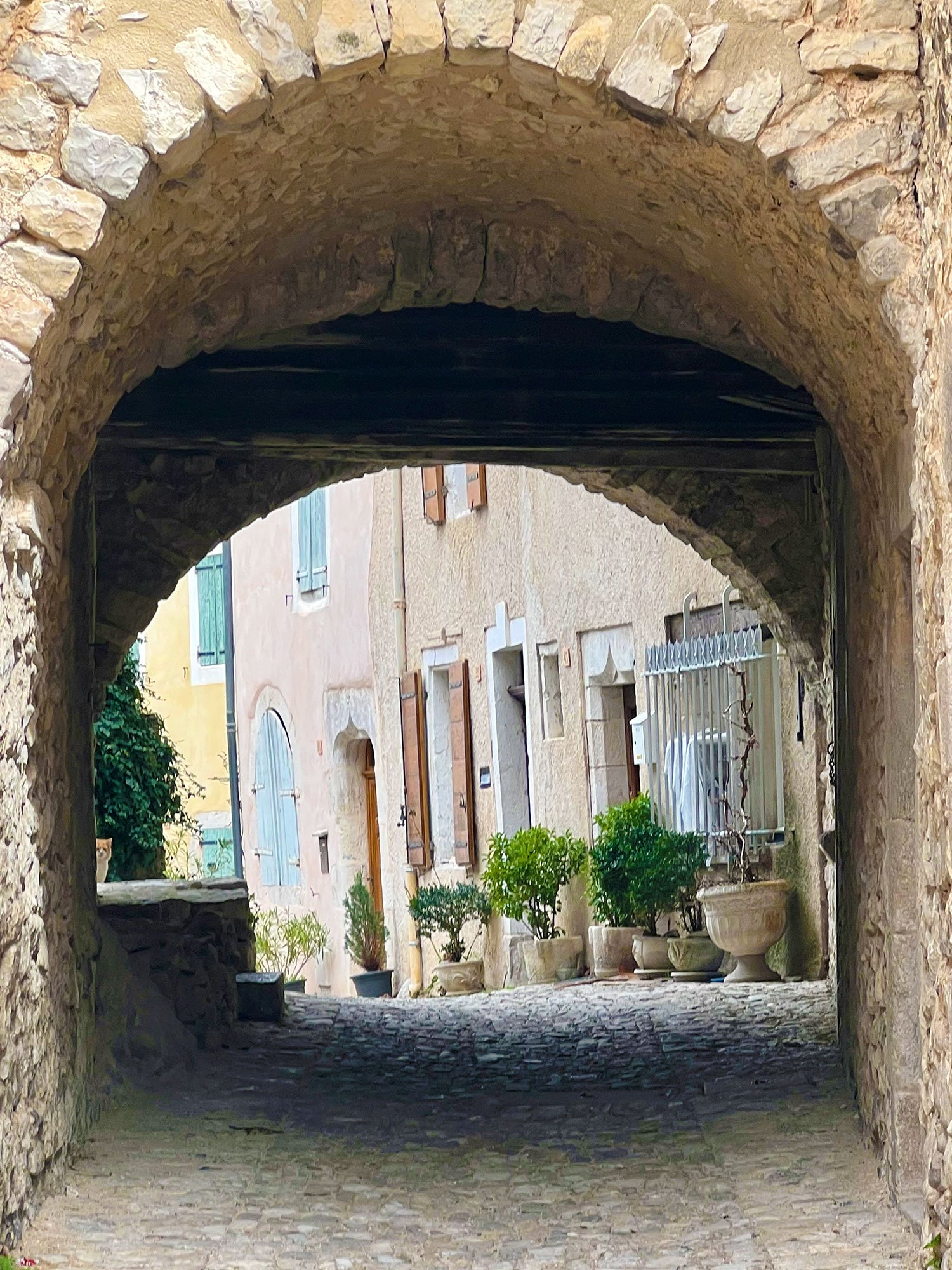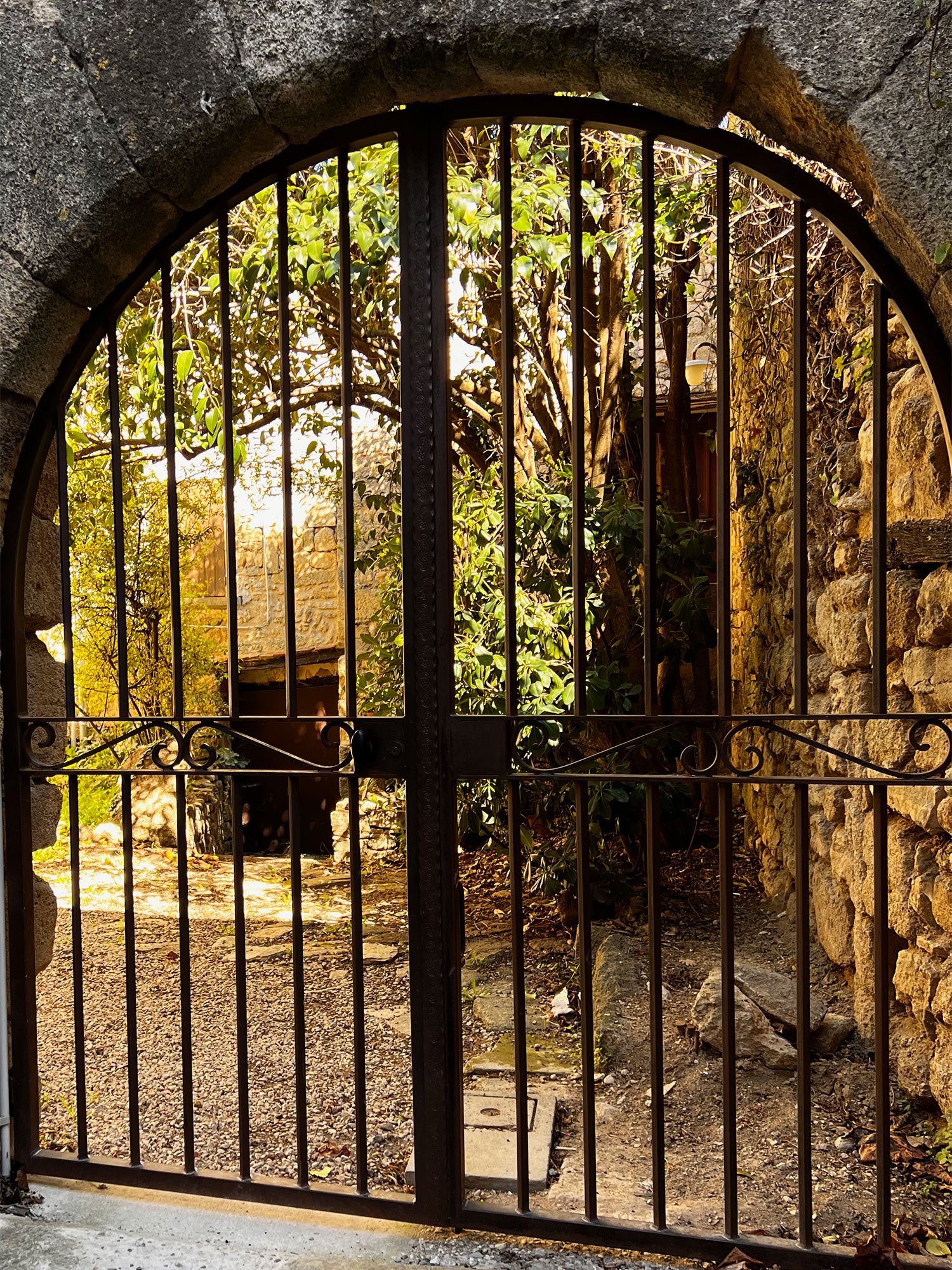Unspoiled hilltop villages in Provence; do they still exist?
We discover three hilltop Provencal villages that are both magical and unspoiled, Simiane La Rotonde, Banon and Viens, proving that Provence is still worth exploring.
Three ‘perched’ villages of Provence away from the crowds
We’d not been to Provence since the 1990s, for no better reason than there are so many other places to discover. Plus, we increasingly had an underlying suspicion that Provence is no longer ‘off the beaten track’ and therefore may have lost some of its magic and charm (for us at least).
So, in March 2023, we headed back to Provence to rediscover it, and to find out whether its magic still exists. We decided to drive down so that we could take our dog, Draco, happily imagining that it’s not very far (being used to driving to Slovenia). Well, it is! It took us three full days of often difficult and stressful driving in each direction, especially on the busy motorways around Lyon. So, our advice would be to fly, or even better take the train – Avignon and Marseilles can be quickly reached by Eurostar and the TGV.
We arranged a house swap (through People Like Us) for a gorgeous old house on the border of the Vaucluse and the Alpes de Hautes Provence departements in the North East of Provence. It is an area often described as ‘remote’ and is absolutely gorgeous: wild, unspoilt, and still thriving for local people. We discovered three villages that are both magical and very special, including the one we called ‘home’ for two weeks: Simiane La Rotonde.
Simiane La Rotonde, Provencal hilltop village
Simiane La Rotonde
If you imagine the perfect Provencal hilltop village, Simiane La Rotonde is it. Recommended by the Rough Guide as Number 2 in ‘Things not to miss in Provence’, the old village’s narrow winding lanes are lined with honey-coloured ancient houses which comprised part of the medieval defences and have barely changed since. There is a stunning old marketplace and the houses bear lots of eye-catching features such as heavy carved doors, stone lintels, elaborate carving and are lit by wrought iron street lamps. The lanes climb steeply up towards the rotonde itself, which is a large domed keep that was part of the medieval castle. Rather cumbersome and monolithic from the outside, it is absolutely stunning inside: with a soaring ceremonial hall full of delicate detail, elegance and beauty.
Recommended by the Rough Guide as Number 2 in ‘Things not to miss in Provence’, the old village’s narrow winding lanes are lined with honey-coloured ancient houses which comprised part of the medieval defences and have barely changed since.
Simiane has a couple of restaurants – one was closed during our very ‘off season’ stay, but the other – the Chapeau Rouge, a short walk out of the village, was open and located next to a boulangerie of the same name. With bread, patisserie and delicatessen to die for, we were lured to the boulangerie every day, triumphantly emerging with crusty sourdough baguettes still warm from the oven (always one more than we actually needed because we’re greedy) Other than that, retail therapy was delightfully non-existent. A couple of market stalls opened in the village square on Thursdays, and a pizza van came on Friday evenings, but otherwise, Simiane was blissfully peaceful yet still ‘alive’ – children playing in the school playground, parents chatting while going about their business, craftsmen working on houses, etc. rather than the deathly out-of-season silence of a village full of second homes. I realise the irony and duplicity of this view, given our position as overseas tourists staying in a second home, but there were also lots of people living in the village. And we always make the effort to shop locally, buy direct from producers, support the local economy and live as much like locals as we can.
In the summer Simiane is surrounded by the purple haze and fragrance of countless lavender fields, which must truly be a sight to behold. At the time of our visit in March they were just long grey mounds, but the emerging wildflowers and almond and cherry blossom more than made up for it. Simiane really is a village for all seasons.
Banon
We loved Banon. Slightly larger than Simiane, with a small supermarket and a few shops and restaurants, it lies just ten minutes’ drive to the north-east. Its claim to fame lies in two very distinct things: Banon Cheese and Le Bleut bookstore.
Banon Cheese
Banon cheese is an unpasteurised, soft goats cheese wrapped in chestnut leaves and tied with raffia string. It dates back to the Gallo-Roman era, and so is very traditional and has been AOC certified for the past few years. When young, it is mild in flavour and then develops an earthy nuttiness as it ages. The very best place to try it (unless you’re lucky enough to chance upon the Banon cheese festival in May) is at the ‘Super Banon’ ‘epicerie’ in the main square. Super Banon (which is a tiny delicatessen) has a fine array of Banon cheeses, grouped by where they were made ie the different villages around Banon, and proudly labelled with the name of the family that made them.
You can taste each in turn before making your vitally important purchase decision. I chose a relatively mild one from ‘l’Alpine des Collines’ but was also tempted by a very creamy one from Simiane la Rotonde. One or two really took your mouth off! ‘Super Banon’ also sells gleaming jars of preserves, local organic wines and spirits, local saucissons and charcuterie, a fabulous selection of organic breads, as well as other cheeses. Definitely worth a visit!
The village of Banon is very appealing featuring narrow cobbled streets winding up to its medieval core and the 14th century fortified gate, the Portail a Machicoulis.
Le Bleut bookstore
Le Bleut is completely unexpected (unless you’ve read this blog 😉) given it is in a Provencal hill village far from the madding crowds. Spread over several buildings, it’s a complete treasure trove for anyone with a literary bent, or who’s just run out of holiday reading. Obviously, most books are in French, and I’ve never seen such an amazing selection of travel and culinary books – truly stunning. There’s also an excellent selection of English novels and the whole store has the wonderful ‘feel’ that only a fabulous bookstore has. Dream on, Amazon.
The village of Banon itself is equally appealing: narrow cobbled streets winding up to its medieval core and the 14th-century fortified gate, the Portail a Machicoulis. The houses of the Rue des Arcades form the ramparts and at the top lies the former chapel of the medieval castle, which was destroyed during the Revolution. The views over this beautiful and wild part of Provence, the Lure massif, are incredible and two handily placed benches allow you to relax and breathe it all in before heading for lunch in the fabulous Vert au Vins, Market days are Tuesdays and Saturdays and highly recommended for their friendly atmosphere and a fantastic selection of stalls selling incredibly fresh and delicious Provencal goodies.
Viens
Viens
Viens is a tiny Medieval village in the Vaucluse, clinging to the towering cliffs above the stunning Gorges d’Oppodette. The Oppodette gorges themselves are accessible by three waymarked routes of varying length and difficulty.
La Boucle aval / les Terres du Four. The easiest trail to follow starts at the Pont de Grand Vallat, a few kilometres south of the village. The trail takes about one hour to complete, with the first half of the trail along the gorges and the second half returning through the woods.
Le Tour des Gorges. The longest route starts at the Parking des Belvederes. This path takes about three hours to complete and is a loop that follows along both sides of the gorges. There are various places along the trail where you are close to the edge of the cliff and care is required.
La Boucle amont / la Traverse de l'échelle. This route also starts at the Parking des Belvederes. It is the most technically difficult of the three, and is a loop in the northern part of the Oppedette gorges.
Today Viens is a ‘Village étoilé’ – a label organised by ANPCEN (Association for the Protection of the Night Sky and Environment) in recognition of initiatives such as complete or partial switching off public lighting, no use of harmful white light, no highlighting of natural heritage, etc.
Viens is a perched, fortified village. The 13th-century chateau and village houses are integrated into 11th-century walls circling the interior houses and cobblestone streets. There are many narrow, cobbled streets to explore, with old doors, even older doorways and 18th century sundials carved into the walls. There’s just one bar which unfortunately was closed on the day of our visit. Indeed, the whole village was pretty much silent, and you could really get a sense of its immensely long, rich, and undoubtedly often troubled history.
Today Viens is a ‘Village étoilé’ – a label organised by ANPCEN (Association for the Protection of the Night Sky and Environment) in recognition of initiatives such as complete or partial switching off public lighting, no use of harmful white light, no highlighting of natural heritage etc. Really wish we had something like that where we live in the UK!
























